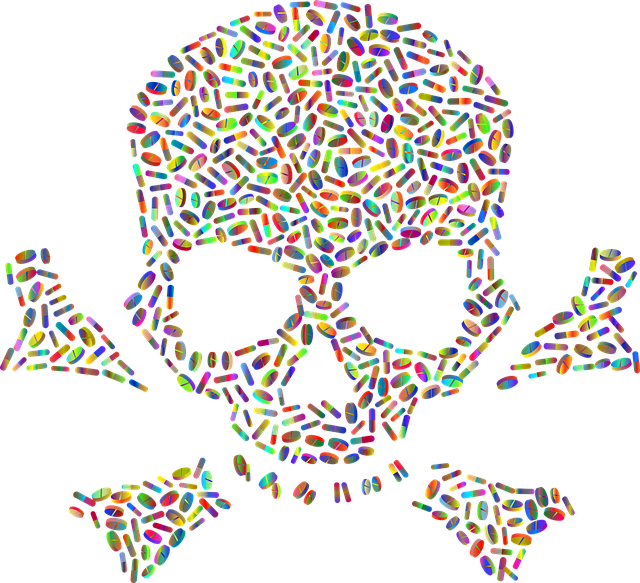Drug abuse and addiction are widespread issues that impact individuals and society as a whole. Understanding drug addiction’s psychological and physical impact is essential for recognizing the signs and seeking appropriate help. Moreover, it is important to be aware of the different categories of commonly abused drugs, including prescription drugs, over-the-counter drugs, and illicit drugs. This comprehensive guide aims to provide insight into the most commonly abused drugs, their effects, and potential dangers.

Understanding Drug Abuse and Addiction
The Psychology Behind Drug Abuse
Drug abuse often stems from underlying psychological factors. Individuals may turn to drugs as a means of escape or self-medication for unresolved emotional pain, trauma, or mental health disorders. The allure of substances can also be influenced by social factors, such as peer pressure or exposure to an environment where drug use is prevalent. Understanding the psychological root causes of drug abuse is crucial for effective prevention and treatment strategies.
When it comes to the psychology behind drug abuse, it is important to recognize the complex interplay between genetics and environment. Some individuals may have a genetic predisposition to addiction, making them more vulnerable to developing substance abuse problems. However, it is essential to understand that genetics alone do not determine one’s fate. Environmental factors, such as upbringing, social support, and exposure to stress, can significantly impact an individual’s susceptibility to drug abuse.
Furthermore, the psychological effects of drug abuse can be far-reaching. Substance use can lead to changes in brain chemistry, affecting the reward system and impairing decision-making abilities. This alteration in brain function can contribute to the compulsive and uncontrollable drug-seeking behavior observed in addiction. Additionally, drug abuse can exacerbate existing mental health conditions or trigger the onset of new ones, further complicating the treatment process.
The Physical Impact of Drug Addiction
Drug addiction takes a toll on the body, affecting various organ systems and overall health. Prolonged drug abuse can lead to cardiovascular problems, respiratory complications, liver and kidney damage, and an increased risk of infectious diseases. The physical consequences of drug addiction are not limited to a specific drug or substance; rather, they can vary depending on the type, dosage, and duration of substance use.
For instance, stimulant drugs like cocaine and methamphetamine can cause severe cardiovascular issues, including heart attacks and strokes. Opioids, on the other hand, can slow down respiratory function, leading to respiratory depression and even overdose. Long-term alcohol abuse can result in liver cirrhosis, while inhalant abuse can cause damage to the respiratory system and other vital organs.
It is crucial to emphasize that the physical impact of drug addiction extends beyond the immediate health consequences. Substance abuse can also have long-term effects on an individual’s overall well-being. Chronic drug use can disrupt sleep patterns, impair immune function, and contribute to nutritional deficiencies. These factors, combined with addiction’s social and psychological ramifications, can significantly diminish an individual’s quality of life.
Recognizing the physical consequences of drug addiction is vital in highlighting the urgency of seeking help. By understanding the detrimental effects that drugs can have on the body, individuals are more likely to prioritize their health and well-being, seeking the necessary support and treatment to overcome addiction.
Categories of Commonly Abused Drugs
Drug abuse is a widespread issue that affects individuals and communities worldwide. Understanding the different categories of commonly abused drugs can help raise awareness and promote prevention efforts. Below is information about these categories in more detail:
Prescription Drugs
Prescription drugs, when used as intended, can provide legitimate medical benefits. Healthcare professionals prescribe them to treat various conditions and improve patients’ quality of life. However, these medications are often misused for non-medical purposes, leading to serious health consequences.
Opioids, a type of prescription drug, are commonly abused due to their pain-relieving properties. They can produce a euphoric effect when taken in higher doses or in ways other than prescribed. This misuse can quickly lead to dependence and addiction.
Central nervous system depressants, such as benzodiazepines and barbiturates, are another category of prescription drugs that are frequently abused. These medications are prescribed to treat anxiety, sleep disorders, and seizures. However, when misused, they can cause drowsiness, confusion, and respiratory depression.
Stimulants, like amphetamines and methylphenidate, are often prescribed to treat attention deficit hyperactivity disorder (ADHD) and narcolepsy. When used as prescribed, they can increase focus and alertness. However, when misused, they can lead to increased heart rate, elevated blood pressure, and even psychosis.
It is crucial to be cautious when using prescription medications and only take them under the guidance of a healthcare professional. Proper education and communication with healthcare providers can help prevent the misuse and abuse of these drugs.

Over-the-Counter Drugs
Over-the-counter drugs, easily accessible in pharmacies and stores, can be misused due to their perceived low risk and availability. These medications are intended for self-treatment of common ailments and symptoms. However, improper use can lead to adverse effects and potential addiction.
Cough and cold medicines, such as those containing dextromethorphan (DXM), are commonly misused by individuals seeking a recreational high. DXM can cause hallucinations, disorientation, and even seizures when taken in excessive amounts.
Motion sickness pills, which contain dimenhydrinate or meclizine, can also be misused for their sedative effects. When taken in larger doses than recommended, they can induce drowsiness and impair cognitive function.
Pain relievers, including nonsteroidal anti-inflammatory drugs (NSAIDs) and acetaminophen, are widely available over-the-counter. While they can provide temporary relief from minor aches and pains, misuse can lead to liver damage, gastrointestinal bleeding, and other serious health issues.
It is important to use over-the-counter medications responsibly, following recommended dosages and consulting a healthcare professional if symptoms persist or worsen. Proper education on the potential risks and side effects of these drugs can help individuals make informed decisions about their use.
Illicit Drugs
Illicit drugs, such as cocaine, heroin, and methamphetamine, are substances that are strictly regulated and illegal in most countries. They carry significant health risks and can lead to severe addictions that are difficult to overcome.
Cocaine, a powerful stimulant, is derived from the coca plant and is known for its euphoric effects. However, its use can lead to cardiovascular problems, respiratory issues, and even overdose. Long-term use can also result in mental health disorders and damage to the nasal septum.
Heroin, an opioid drug derived from morphine, is highly addictive and can have devastating effects on individuals and communities. It is commonly injected, snorted, or smoked, and its use can lead to collapsed veins, infections, and an increased risk of bloodborne diseases.
Methamphetamine, also known as meth, is a potent central nervous system stimulant that can cause long-lasting damage to the brain and body. Its use can lead to severe dental problems, skin sores, and mental health disorders. Methamphetamine addiction is notoriously difficult to overcome due to its highly addictive nature.
The use of illicit drugs not only endangers the individual’s well-being but also poses societal challenges due to criminal activity associated with their distribution. Education and prevention efforts are essential in combating the abuse of illicit drugs, focusing on the potential consequences and providing resources for those seeking help.
In conclusion, understanding the categories of commonly abused drugs can help individuals make informed decisions about their use and promote a healthier society. By raising awareness, providing education, and offering support, society can work towards preventing drug abuse and its devastating effects.
You can learn more about commonly abused drugs by talking with an admission counselor at Inspire Malibu.





